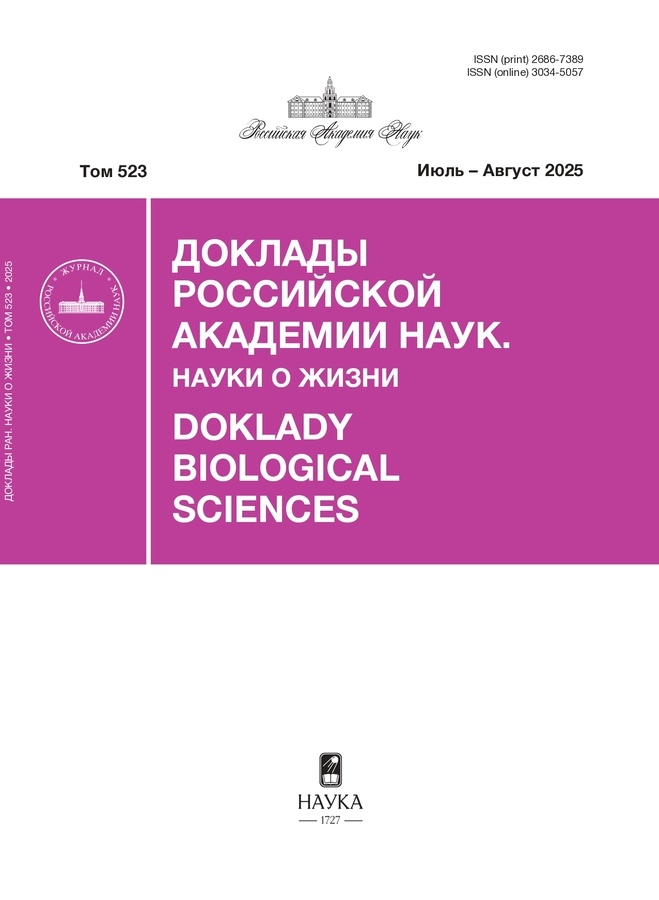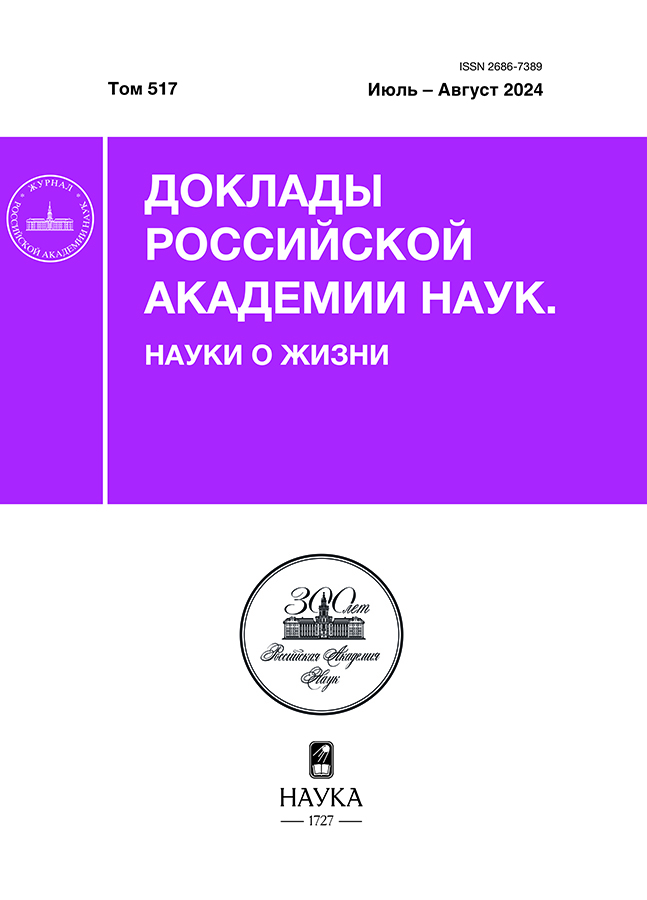Анализ естественных антител при развитии фантомного болевого синдрома
- Авторы: Мягкова М.А.1, Петроченко С.Н.1, Боброва З.В.1, Орлова Е.А.1
-
Учреждения:
- Институт физиологически активных веществ Федерального исследовательского центра проблем химической физики и медицинской химии Российской академии наук
- Выпуск: Том 517, № 1 (2024)
- Страницы: 69-75
- Раздел: Статьи
- URL: https://cijournal.ru/2686-7389/article/view/651419
- DOI: https://doi.org/10.31857/S2686738924040118
- ID: 651419
Цитировать
Полный текст
Аннотация
Проведено определение естественных антител (е-Ат) к регуляторам основных систем биохимического гомеостаза: β-эндорфин, серотонин, дофамин, гистамин, орфанин, ангиотензин, ГАМК, глутамат, брадикинин, вазопрессин, тромбин, α-2-макроглобулин у лиц с фантомным болевым синдромом (ФБС), полученным при ампутации после ранения. Установлено, что каждый пациент обладает индивидуальным иммунопрофилем, но для всех достоверно увеличение уровня антител к серотонину, гистамину и ангиотензину, отражающих хронизацию болевого синдрома, и не зависящее от самооценки степени выраженности ФБС. Определение роли регуляторов биохимического гомеостаза в развитии фантомных болей показало, что при высокой, умеренной и слабой степени выраженности ФБС наиболее активно функционируют системы биогенных аминов и ангиотензинэргическая. Снижение интенсивности ФБС нормализует отклонения всех иммунологических показателей. Уровень е-Ат для болевой (β-эндорфин) и противоболевой (орфанин) систем значимы только при низком ФБС. Мониторинг индивидуального профиля е-Ат к эндогенным регуляторам позволяет получить объективную картину болевого статуса организма пациента.
Полный текст
Об авторах
М. А. Мягкова
Институт физиологически активных веществ Федерального исследовательского центра проблем химической физики и медицинской химии Российской академии наук
Email: dianark@mail.ru
Россия, г.Черноголовка, Московская обл.
С. Н. Петроченко
Институт физиологически активных веществ Федерального исследовательского центра проблем химической физики и медицинской химии Российской академии наук
Автор, ответственный за переписку.
Email: dianark@mail.ru
Россия, г.Черноголовка, Московская обл.
З. В. Боброва
Институт физиологически активных веществ Федерального исследовательского центра проблем химической физики и медицинской химии Российской академии наук
Email: dianark@mail.ru
Россия, г.Черноголовка, Московская обл.
Е. А. Орлова
Институт физиологически активных веществ Федерального исследовательского центра проблем химической физики и медицинской химии Российской академии наук
Email: dianark@mail.ru
Россия, г.Черноголовка, Московская обл.
Список литературы
- Осипова Н. А., Собченко Л. А. Постампутационный фантомный болевой синдром: медицинские и социальные проблемы // Анестезиология и реаниматология. 2011. № 6. С. 41–43.
- Hsiao A.F., York R., Hsiao I., Hansen E., Hays R.D., Ives J., Coulter I.D. A randomized controlled study to evaluate the efficacy of noninvasive limb cover for chronic phantom limb pain among veteran amputees. Arch. Phys. Med. Rehabil. 2012. 93(4):617–222.
- Jackson M. A. Pain after amputation // British Journal of Anaesthesia. 2012. Р. 1743–1824. doi.org/10.1093/bjaceaccp/mkh007
- Gabriel R., Jianren M. Immature spinal cord neurons are dynamic regulators of adult nociceptive sensitivity. J. Cell. Mol. Med. // 2015. 19, 2352–2364.
- Moura V.L., Faurot K.R., Gaylord S.A., Mann J.D., Sill M., Lynch C., Lee M.Y. Mind-body interventions for treatment of phantom limb pain in persons with amputation. Am. J. Phys. Med. Rehabil. 2012; 91(8):701–14.
- Attal N., Bouhassira D., Baron R. Diagnosis and assessment of neuropathic pain through questionnaires. Lancet Neurol. 2018; 17(5):456–466.
- Мягкова М.А., Петроченко С.Н., Морозова В.С. Определение антител к эндогенным биорегуляторам для диагностики функционального состояния организма // Известия АН. Серия химическая, 2018. № 4. С. 762–767.
- Verma V., Sheikh Z., Ahmed A.S. Nociception and role of immune system in pain. ActaNeurolBelg. 2015; 115(3):213–220.
- Решетняк В.К., Кукушкин М.Л. Центральные и периферические механизмы физиологической и патологической боли. Клиническая патофизиология. 2015; 1: 1–17.
- Левашова А.И., Морозова В.С., Петроченко С.Н., Мягкова М.А., Мосейкин И.А. //Сравнительный анализ иммунохимических и клинических показателей при дорсалгиях корешкового и рефлекторного генеза //Журн. неврологии и психиатрии им. Корсакова. 2017; 3: 4–10.
- Левашова А.И., Мягкова М.А. Анализ иммунохимических показателей при вертеброгенном болевом синдроме // BiomedicalChemistry: Researchand Methods 2018, 1(3), 1–5.
- Игонькина С.И., Ветрилэ Л.А., Кукушкин М.Л. Влияние антител к норадреналину на развитие невропатической боли. Бюлл. экспер. биологии и медицины. 2016; 162(12): 678–681.
- Obara I., Telezhkin V., Alrashdi I., Chazot P. Histamine, histamine receptors, and neuropathic pain relief //Br J Pharmacol. 2019. V. 177. P. 580–599.
- Гордеев А.В., Галушко Е.А., Савушкина Н.М. Роль ангиотензинов в патогенезе воспалительных заболеваний суставов //Терапевтический архив. 2021; 93 (5): 635–639.
Дополнительные файлы

Примечание
Представлено академиком РАН С.О. Бачуриным











